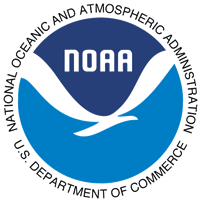Barbara A. Muhling, John T. Lamkin, Mitchell A. Roffer, Frank Muller-Karger,
Estrella Malca, Ricardo Domingues, David Lindo, Joseph Quattro,
G. Walter Ingram Jr., Redwood Nero, Sang-Ki Lee, and Yanyun Liu
Session 1, Talk 5, 18/1/16 @ 1030 hrs
Atlantic bluefin tuna spawning activity is concentrated in two sub-tropical semi-enclosed seas: the Gulf of Mexico and Mediterranean Sea. United States waters in the Gulf of Mexico are historically well-sampled for larval bluefin, with annual cruises completed during the spring spawning season since the late 1970s. Analyses of catch data have shown that larvae are associated with specific oceanographic conditions, which largely reflect known adult habitat use. Across the >30 years of sampling, larval bluefin tuna were collected most often in offshore waters where surface temperatures were warm (~24-28°C), and surface chlorophyll was low. Exploratory cruises completed since 2009 have targeted adjacent areas in the western central Atlantic with similar environmental characteristics to the northern Gulf of Mexico spawning area. Low numbers of bluefin tuna larvae were collected in the western Caribbean Sea, southern Gulf of Mexico and Bahamas, however the contribution of these areas to total spawning activity remains uncertain. Recent advances in larval ecology suggest general adaptation to oligotrophic environments, and potential links between oceanographic conditions and larval survival. As drivers of recruitment are better studied and understood, the potential impacts of climate change can be assessed, as well as the influence of spawning ground conditions on future stock sustainability.
Contact: B. Muhling, Princeton University, USA, This email address is being protected from spambots. You need JavaScript enabled to view it.














